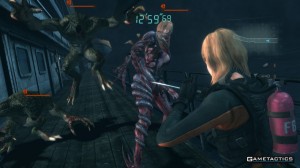 Let’s face it, the Resident Evil franchise is in a bit of dire straits, at least in critical reception if not sales. Its last major release, Resident Evil 6, has seen the flagship sail into lonely waters, seemingly directionless as it wavers between its survival horror roots and it’s action shooter aspirations. Oddly enough, however, its plucky little 3DS cousin in Resident Evil: Revelations seems to have found the route to success, so Capcom has called them in to right the home console ship. Can they really pull off the rescue in time to save the franchise’s day?
Let’s face it, the Resident Evil franchise is in a bit of dire straits, at least in critical reception if not sales. Its last major release, Resident Evil 6, has seen the flagship sail into lonely waters, seemingly directionless as it wavers between its survival horror roots and it’s action shooter aspirations. Oddly enough, however, its plucky little 3DS cousin in Resident Evil: Revelations seems to have found the route to success, so Capcom has called them in to right the home console ship. Can they really pull off the rescue in time to save the franchise’s day?
Our protagonists in the game, Jill Valentine and her new partner Parker Luciani, find themselves in a similar predicament. They were sent by BSAA to find Chris and Jessica aboard their last known location, a cruise ship in the middle of the Mediterranean called the SS Queen Zenobia. Soon they discover the whole thing is a trap set by the bioterrorist group, Veltro, which was responsible for a bio-organic weapons (BOW) attack on the floating, solar powered city of Terragrigia a year before. These BOW’s, created by the new T-Abyss virus, now run amok the cruise ship, making life hell for everyone who is misfortunately aboard. Veltro meanwhile threatens to release this virus into one fifth of the Earth’s water in retaliation for the destruction of their forces in Terragrigia. The story alternates between the current situation on the Queen Zenobia, flashbacks to the Terragrigia incident and other events, and actions of other members of the BSAA like Chris, Jessica, and a new, somewhat slapstick pair: Quint Cetcham and Keith Lumley. While there are different timelines to keep track of, it all weaves in and out pretty effectively, and at the start of each episode you get television style recap of what happened in the last one. By the way, the entire story takes place between the events of Resident Evil 4 and Resident Evil 5, for those keeping track. This was probably the most enjoyable aspect of the game as even though I’m not a huge Resident Evil fan, the story was enough of a hook to keep me pushing through the game.
And pushing through the game is an apt description of my experience as far as the gameplay goes, though not entirely. Fans will appreciate the turn back towards more survival horror elements in Revelations. For instance, ammo is limited in supply, so you’ll have to be judicious in your use of bullets and use the Genesis (left shoulder button) to continually scan the rooms for more. This would be a lot more tolerable however if the aiming controls weren’t more horrific than the enemies you’re facing. I’m not sure if it’s the Wii U analogs that are too loose or that the game just wasn’t calibrated properly for them, but it’s nearly impossible to adjust your focus without overshooting your target in one way or another, making enemies which require specific shots to kill more annoying than necessary. You can play with the sensitivity settings (I had the most luck setting it to Very Slow) but none of them seem to account for some kind of inherent lag in the controls. Fortunately, while the game harkens back to its previous incarnations, you do not lose the ability to move and shoot at the same time, which helps adjust your shot a bit more and makes it easier to keep your distance from the BOWs closing in on you. I did find the over the shoulder camera a bit disorienting, though. On the 3DS it works because the screen is smaller and it allows the graphics to stand out more, but on the big screen the limited field of vision just makes things more claustrophobic than necessary.
Of course that’s probably part of the logic in the game’s design as most of the difficulty you’ll find is in the controls and camera rather than the mostly dimwitted and slow moving enemies. Most of my deaths resulted from monsters out of my view, either off to the side or right behind me. Then when you get to the boss scenarios, cheap deaths become par for the course. For instance in one segment you’ll find yourself chased by a huge, yet incredibly swift monster that can kill you automatically the moment it grabs you. As if that weren’t enough, the rooms are flooded with nearly a dozen mindless mobs firing on you from a distance or otherwise getting in the way of your escape, replenishing whenever you kill them so they’re basically serving only as ammo sponges and complete annoyances. All the meanwhile you’re fighting the ridiculous controls I mentioned earlier. I just wish the difficulty had more to do with the actual battle rather than the multitude of inconveniences, so my complaint is not that it was too hard in the first place.
Part of the trick to making things easier is the ability to change and upgrade weapons, and there’s different types of upgrades to fit your playstyle (increase damage, stopping power, fire rate, etc.), though it must be said that the rifles, shotguns, and magnums are the favored as they’re able to put down enemies much faster and chew through less ammo as a result. You also have an array of grenades you can pick up for your arsenal, some which stun and others which lure groups of BOWs in to their doom. All of these are either found out in the open throughout each section of the ship or they can be discovered using the Genesis scanning device mentioned earlier. The Genesis can also be used to scan BOWs for data, with unique ones filling up a percentage indicator more than others. When you hit 100% you earn another health item. If you’re done or tired of the campaign mode, there is also a Raid mode where you can go through various levels in the game alone or with an online partner. There’s various weapon, character, and outfit unlocks as you level up through the mode and is a nice bit of replay value. One nice touch is you actually get to see the monster’s health bars in this mode as well. A plus of the game being ported from 3DS to Wii U is that the use of the GamePad in dual screen mode has already been perfected. Having a larger map to look down at is a great help in finding your objectives, for instance. If you choose to play on just the TV or the GamePad, the interface simply switches to what you’ll find in the other console ports of the game, which is still quite usable.
Of course, the downside of it being a handheld port can be plainly seen even in screenshots. I’ll give Capcom credit for putting some extra effort into making sure the main characters still looked fairly good in 720p, but everything else sports decidedly lower resolution textures that are stretched to fit. Certain environments outside the ship are total eyesores, with polygons jutting out everywhere. The audio on the other hand doesn’t suffer for it, and the voice acting is par for what you’d expect from the series (while we’re at it, kudos for including multiple languages including Japanese, subtitles are available too of course). Revelations also makes good use of sound effects and music to spook the crap out of you. Even at its worst though, the game manages to convince that it could have been a early current gen title so it’s hard to knock it too much considering its origin.
That leads to my conclusion that Resident Evil: Revelations for the Wii U is a fairly competent port of a game that while nowhere near perfect, should be more like what fans of the genre have been clamoring for. By hedging more towards the survival horror aspects than the action elements, it returns more of the series’ unique character. The compromises made on the other end do make some of the gameplay suffer in my opinion, however, and if they could just clean up the control and camera issues it go a longer way towards winning me over. If you already own the 3DS version and are wondering if you should pick this up, I would pass as the minor changes made (one new enemy, a harder “Inferno” mode, and MiiVerse integration) simply aren’t worth it. For those of you who are not fans of the franchise I would suggest renting or staying clear as there’s still a lot of rough edges here.
Gameplay
Graphics
Sound
Overall

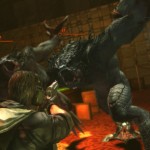
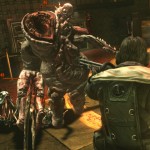

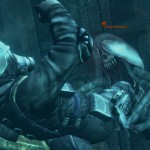

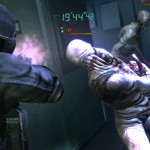
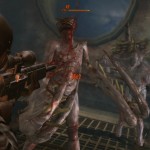
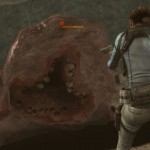

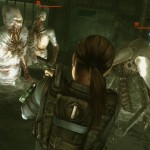


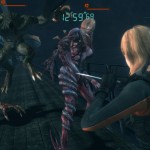


One Response